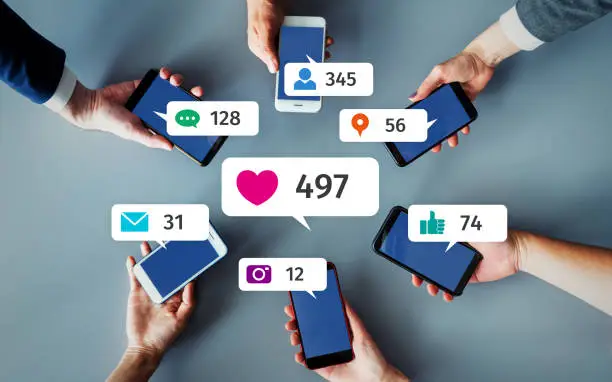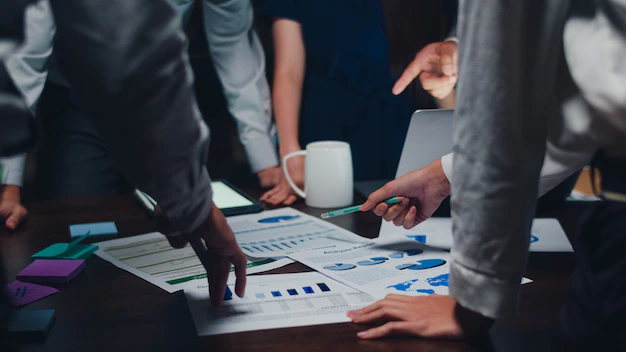10 Effective Strategies for Improving Learning Retention

As a learner, it’s not enough to just absorb information. It’s essential to retain that information for the long-term, as it can aid in better decision-making, problem-solving, and critical thinking.
Unfortunately, many students struggle with retaining information beyond a few days, which can hinder their academic progress.
But the good news is that there are several effective strategies for improving learning retention. In this post, we’ll discuss ten such strategies that can help you retain information more effectively.
How Does Learning Retention Work?
When there’s retention in learning, the human mind processes information more fully, enabling it to draw upon that information better in the future. It contrasts with assimilating information temporarily, which doesn’t help in any learning situation.
Learning retention improves the learning experiences of an individual since long-term memory recall is essential to flawless applications of knowledge in the future.
One’s areas of interest and deep engagement with learning materials are significant factors in ensuring long-term retention of information.
10 Effective Strategies for Improving Learning Retention
Effective strategies for improving learning retention are as follows:
1 Active Learning
Active learning refers to any learning activity that requires active participation and engagement from the learner. This could include exercises, discussions, problem-solving, or even interactive games.
By engaging actively with the material, learners can retain information better as they form stronger neural connections in their brains.
Additionally, active learning helps to keep learners motivated and focused, which can improve their overall learning experience.
Some effective active learning techniques include:
- Group discussions and brainstorming sessions
- Role-playing or simulations
- Hands-on activities, such as experiments or demonstrations
- Interactive games or quizzes
2) Spaced Repetition
Spaced repetition involves reviewing material at regular intervals to reinforce memory retention. Rather than cramming information in one go, learners should break down the material into smaller chunks and revisit them periodically. This helps to strengthen long-term memory and recall, making it easier to retain information for a more extended period.
One effective way to incorporate spaced repetition into your learning is to use flashcards. Write down key facts, concepts, or vocabulary on one side and the corresponding definition or explanation on the other.
Review the flashcards periodically, starting with the ones you find the most challenging and gradually working your way up to the easier ones.
3) Chunking
Chunking is the process of breaking down larger pieces of information into smaller, more manageable chunks. Our brains are wired to retain information better in smaller chunks, making it easier to recall and retain over time.
For example, instead of trying to memorize an entire chapter of a textbook in one go, learners can break it down into smaller sections or key concepts and focus on them individually.
To make the most of chunking, learners should focus on the most critical pieces of information and group them together based on their relevance and similarity.
This can help to reduce cognitive overload and improve memory retention. Additionally, learners can use visual aids, such as mind maps or diagrams, to help organize and visualize the information.
4) Visualization
Visualization involves creating mental images or associations to help retain information more effectively. By associating information with visual or sensory cues, learners can create a more robust memory and recall the information more easily.
For example, learners could visualize a concept as a physical object, such as a tree or a building, to help them remember it better.
One effective visualization technique is the method of loci, also known as the memory palace. This involves associating each piece of information with a specific location or object in a familiar place, such as your home or workplace. As you mentally walk through the place, you can recall the information associated with each location.
Related post: What Cognitive Load Does To Learners
5) Self-Testing
Self-testing involves quizzing yourself on the material you’ve learned. By testing your memory recall, you can identify gaps in your knowledge and focus on areas that need more attention.
Additionally, self-testing helps to reinforce memory recall, making it easier to retain information over time.
Some effective self-testing techniques include:
- Creating practice quizzes for yourself
- Using online quizzes or games
- Repeating information aloud or writing it down from memory
6) Reflection
Reflection involves actively thinking about and analyzing the material you’ve learned. By
reflecting on the material, learners can identify key insights and connections, helping to reinforce their memory and understanding of the information.
To incorporate reflection into your learning, take some time after each study session to think about what you’ve learned. Ask yourself questions like, “What did I learn today?” or “How can I apply this information to real-life situations?” You could also write a journal entry or create a mind map to help organize your thoughts.
7) Active Recall
Active recall involves actively retrieving information from memory rather than passively reviewing it. This technique can help to reinforce memory and improve retention by forcing learners to retrieve information from their long-term memory rather than their short-term memory.
To incorporate active recall into your learning, try quizzing yourself on the material after a study session or recalling key facts or concepts from memory.
Additionally, try to use the information you’ve learned in new and creative ways, such as applying it to real-life situations or explaining it to someone else.
8) Mnemonic Devices
Mnemonic devices are memory aids that help to associate information with a more memorable image, word, or phrase. By creating an association between the information and something more memorable, learners can retain the information more effectively.
Some common mnemonic devices include:
- Acronyms, such as “ROYGBIV” to remember the colors of the rainbow
- Rhymes or songs, such as “i before e, except after c”
- Visual imagery, such as imagining a giant spider to remember the word “arachnid”
9) Sleep and Exercise
Sleep and exercise may seem unrelated to learning retention, but they can have a significant impact on memory recall.
Studies have shown that getting enough sleep and exercise can improve memory consolidation, making it easier to retain information over time.
To incorporate sleep and exercise into your learning routine, aim for at least 7-8 hours of sleep per night and try to incorporate regular physical activity into your schedule. This could be as simple as taking a brisk walk or doing some yoga each day.
10) Personalization
personalization involves making the material more personally relevant to you. By creating a personal connection with the material, learners can improve their motivation and engagement, making it easier to retain the information over time.
To personalize your learning, try to connect the material to your own experiences, interests, or goals. For example, if you’re studying biology, you could focus on topics that relate to your favorite animals or plants. Additionally, try to find ways to apply the information to your own life or future career goals.
Conclusion
Improving learning retention requires effort and intentionality, but the benefits are well worth it.
By incorporating active learning, spaced repetition, chunking, visualization, self-testing, reflection, active recall, mnemonic devices, sleep and exercise, and personalization into your learning routine, you can improve your memory recall and retain information more effectively.
Whether you’re a student, professional, or lifelong learner, these strategies can help you achieve your learning goals and excel in your chosen field.






